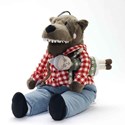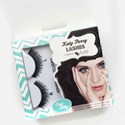The objects have all been recently acquired as part of the museum's new approach to collecting contemporary design and architecture, known as Rapid Response Collecting.
The way that the V&A has traditionally collected objects over its 160-year history has been based on the long-established idea that an object proves its place in design history over a period of time - a process typically supported by inclusion in academic exhibitions and literature.
Kieran Long, senior curator of contemporary architecture, design and digital at the museum, believes "the world works a little bit differently these days".
"The V&A has always strived to understand social history through objects of design, art and architecture, and with this new strategy we are bringing that commitment to bear on the contemporary world."
"There are global events that take place and have a bearing on the world of design and manufacturing, which give certain objects a certain relevance at that moment."
Material Culture
The gallery will be regularly updated with new acquisitions and the long-term vision for Rapid Response Collecting is a permanent legacy of objects in the collection that represent material culture in the 21st century.
The world's first 3D printed gun, 'the Liberator', designed by Texan Law student Cody Wilson is typical of the items on show. Wilson's not-for-profit company, Defense Distributed, created designs for guns and gun components that can be downloaded by anyone anywhere in the world and printed out on a 3D printer.
The creation of the gun, comprising 15 printable plastic components and a single metal nail as a firing pin, upended discussions about the benefits of new manufacturing technologies and the unregulated sharing of designs online, and continues to make the news.
One of the benefits of this new approach is that the museum preserves objects that currently have little commercial value and would otherwise disappear.
Mr Long cites the decision by the prints department to immediately acquire items of Cold War propaganda following the break-up of the Soviet bloc in 1989 as a prescient example of this thinking.
Why a pair of Primark jeans? They were acquired as an example of 'fast fashion' soon after the Rana Plaza factory building in Dhaka collapsed, killing 1129 workers. The factory made clothes for a number of major western high street budget brands.
The first fruits of the Rapid Response Collecting programme can be seen in a modest space within the V&A's 20th century galleries.









